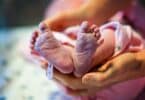Pregnancy and childbirth mark profound milestones in a person’s life, but what about their brain? Recent research, published in January in Nature Neuroscience, explores this intriguing topic, shedding light on the dynamic changes that occur within the maternal brain.
The study, which followed over 100 new mothers from late pregnancy through the initial weeks postpartum, represents a significant advancement in the field of maternal neuroscience. Unlike previous studies that focused solely on either the prenatal or postnatal period, this research examined the brain both before and after birth, taking into account the mode of delivery—vaginal birth or cesarean section.
Lead author Susana Carmona, a neuroscience researcher at Charles III University of Madrid, describes the study as groundbreaking, filling crucial gaps in our understanding of maternal brain dynamics. The findings reveal temporary alterations in certain brain regions during pregnancy and childbirth, alongside more enduring changes in a brain circuit associated with self-reflection and empathy.
One of the key findings of the study is the identification of the default mode network as the only circuit that does not fully revert to its pre-pregnancy state post-birth. This suggests that the effects of pregnancy and childbirth on the maternal brain may persist for years.
Comparisons drawn between the changes observed in pregnant individuals and those experienced by teenagers offer intriguing parallels. Both groups undergo a reduction in gray matter, attributed to a process known as “synaptic pruning,” wherein unnecessary neural connections are eliminated to optimize brain function.
Emily Jacobs, a neuroscientist at the University of California, Santa Barbara, likens this process to sculpting, where the beauty of the brain is revealed through the removal of excess. Similarly, hormonal fluctuations during pregnancy contribute to these brain changes, akin to the hormonal roller coaster experienced during adolescence.
Furthermore, the study highlights differences in brain recovery based on the mode of delivery. Women who underwent vaginal birth or began labor before emergency cesarean section exhibited slower recovery from gray matter declines compared to those with scheduled cesarean sections.
Despite these significant findings, some questions remain unanswered. How do non-birthing or adoptive parents experience similar brain changes? What impact does labor have on the parent-child bond? These inquiries underscore the need for further research in the field of maternal neuroscience.
However, challenges persist in recruiting participants for such studies, as highlighted by Joe Lonstein, a neuroscientist at Michigan State University. He emphasizes the importance of diversity in scientific research, particularly in addressing questions about women’s health.
The study offers valuable insights into the complex interplay between pregnancy, childbirth, and brain dynamics. As researchers continue to uncover the mysteries of maternal neuroscience, we gain a better understanding of the profound transformations occurring within the maternal brain.
Related Articles:







